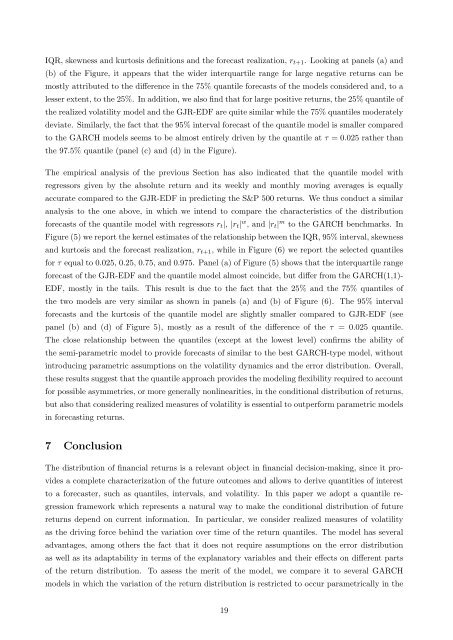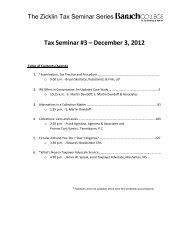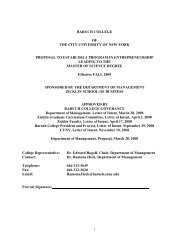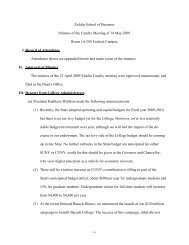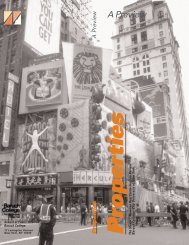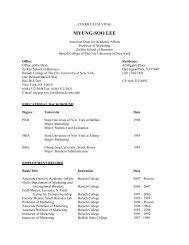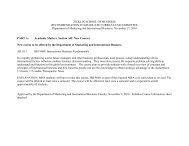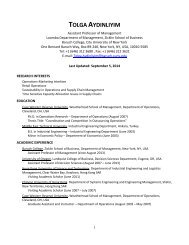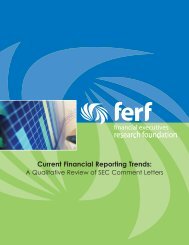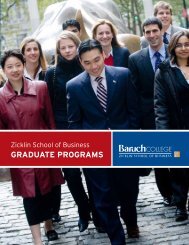Valueat-Risk
Forecasting the Return Distribution Using High-Frequency Volatility ...
Forecasting the Return Distribution Using High-Frequency Volatility ...
- No tags were found...
You also want an ePaper? Increase the reach of your titles
YUMPU automatically turns print PDFs into web optimized ePapers that Google loves.
IQR, skewness and kurtosis definitions and the forecast realization, r t+1 . Looking at panels (a) and<br />
(b) of the Figure, it appears that the wider interquartile range for large negative returns can be<br />
mostly attributed to the difference in the 75% quantile forecasts of the models considered and, to a<br />
lesser extent, to the 25%. In addition, we also find that for large positive returns, the 25% quantile of<br />
the realized volatility model and the GJR-EDF are quite similar while the 75% quantiles moderately<br />
deviate. Similarly, the fact that the 95% interval forecast of the quantile model is smaller compared<br />
to the GARCH models seems to be almost entirely driven by the quantile at τ = 0.025 rather than<br />
the 97.5% quantile (panel (c) and (d) in the Figure).<br />
The empirical analysis of the previous Section has also indicated that the quantile model with<br />
regressors given by the absolute return and its weekly and monthly moving averages is equally<br />
accurate compared to the GJR-EDF in predicting the S&P 500 returns. We thus conduct a similar<br />
analysis to the one above, in which we intend to compare the characteristics of the distribution<br />
forecasts of the quantile model with regressors r t |, |r t | w , and |r t | m to the GARCH benchmarks. In<br />
Figure (5) we report the kernel estimates of the relationship between the IQR, 95% interval, skewness<br />
and kurtosis and the forecast realization, r t+1 , while in Figure (6) we report the selected quantiles<br />
for τ equal to 0.025, 0.25, 0.75, and 0.975. Panel (a) of Figure (5) shows that the interquartile range<br />
forecast of the GJR-EDF and the quantile model almost coincide, but differ from the GARCH(1,1)-<br />
EDF, mostly in the tails. This result is due to the fact that the 25% and the 75% quantiles of<br />
the two models are very similar as shown in panels (a) and (b) of Figure (6). The 95% interval<br />
forecasts and the kurtosis of the quantile model are slightly smaller compared to GJR-EDF (see<br />
panel (b) and (d) of Figure 5), mostly as a result of the difference of the τ = 0.025 quantile.<br />
The close relationship between the quantiles (except at the lowest level) confirms the ability of<br />
the semi-parametric model to provide forecasts of similar to the best GARCH-type model, without<br />
introducing parametric assumptions on the volatility dynamics and the error distribution. Overall,<br />
these results suggest that the quantile approach provides the modeling flexibility required to account<br />
for possible asymmetries, or more generally nonlinearities, in the conditional distribution of returns,<br />
but also that considering realized measures of volatility is essential to outperform parametric models<br />
in forecasting returns.<br />
7 Conclusion<br />
The distribution of financial returns is a relevant object in financial decision-making, since it provides<br />
a complete characterization of the future outcomes and allows to derive quantities of interest<br />
to a forecaster, such as quantiles, intervals, and volatility. In this paper we adopt a quantile regression<br />
framework which represents a natural way to make the conditional distribution of future<br />
returns depend on current information. In particular, we consider realized measures of volatility<br />
as the driving force behind the variation over time of the return quantiles. The model has several<br />
advantages, among others the fact that it does not require assumptions on the error distribution<br />
as well as its adaptability in terms of the explanatory variables and their effects on different parts<br />
of the return distribution. To assess the merit of the model, we compare it to several GARCH<br />
models in which the variation of the return distribution is restricted to occur parametrically in the<br />
19


